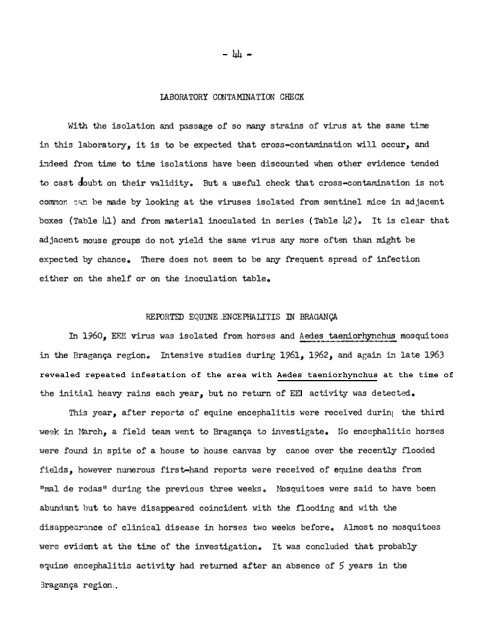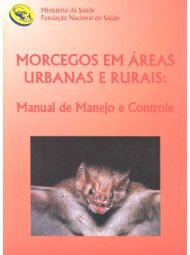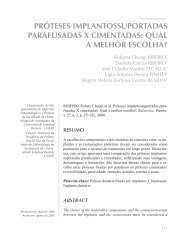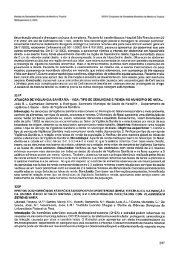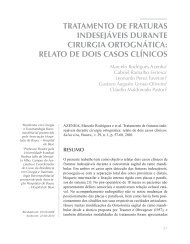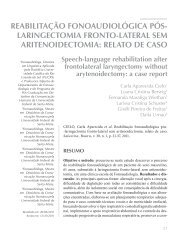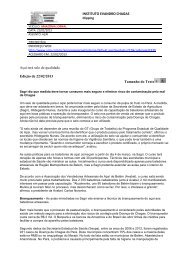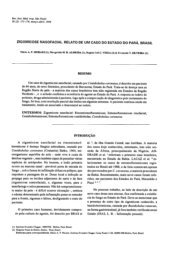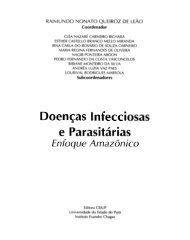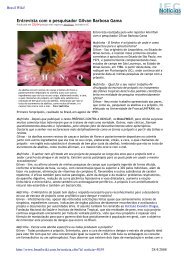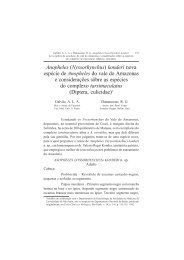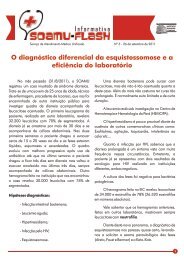Belém VIRUS Laboratory
Belém VIRUS Laboratory
Belém VIRUS Laboratory
You also want an ePaper? Increase the reach of your titles
YUMPU automatically turns print PDFs into web optimized ePapers that Google loves.
eek agança ~~ lds, deed re ble 1er<br />
44-<br />
IABORATORY CONTAMINATION CFmCK<br />
With the isolation and passage of so many strains of virus at the same time<br />
in this laboratory, it is to be expected that cross-contamination will occur, and<br />
!rom time to time isolations have been discounted when other evidence tended<br />
to cast cloubt on their validityo But a useful check that cross-contamination is not<br />
comm.:>n<br />
be made by looking at the viruses isolated from sentinel mice in adjacent<br />
boxes (Table 41) and from material inoculated L~ series 42)0 It is clear that<br />
adjacent mouse groups do not yield the same vírus any more often than might be<br />
expected by chance. There does not seem to be any frequent spread or infection<br />
on the shelf or on the inoculation tableo<br />
REroRTED EQUllm .ENCEPHALITIS ll.J BP..AOOJÇA<br />
In 1960, EEE virus was isolated from horses and ~s ~e~or~ch~ mos qui toes<br />
in the Bragança regiono<br />
Intensive studies during 1961, 1962, and again L~ late 1963<br />
the initial heavy rains each year, but no return oí EEJ activity was detected.<br />
This year, after reports af equine encephalitis were received durin!<br />
in I~rch, a field team went to Bragança to investigate.<br />
the third<br />
l~o encephali tio horses<br />
'~ere faund in spi te af a hause to hause canvas by canoe over the recently flooded<br />
however nW:1erous first-hand reports "lere received or equine deaths from<br />
"mal de rodas" during the previous ~'1ree weekso Mosquitoes were said to have been<br />
abunctant but to have disappeared coincident wi th the flooding and wi th the<br />
disappearance af clinical disease in horses two weeks beforeo Almos t no mos qui toes<br />
evident at the time of the investigationo<br />
It was concluded that probably<br />
equine encephali tis acti vi ty had returned after an absence af 5 years in the<br />
region


